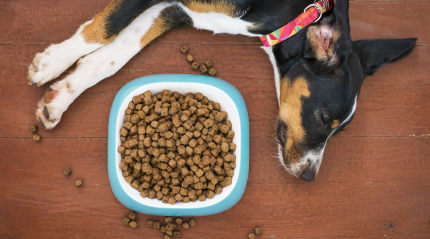Knee Pain: Causes, Treatment, and Prevention
- 13 June 2022

Knee pain is a common ailment that can occur due to various reasons. It can range from mild discomfort to severe pain, which can affect the quality of life. Knee pain can be caused by an injury, arthritis, or other medical conditions. This article will discuss the causes, treatment, and prevention of knee pain.
Causes of Knee Pain:
There are several causes of knee pain, including:
- Injuries: Knee injuries can cause pain, swelling, and stiffness. These injuries can occur due to accidents, falls, or sports-related activities.
- Arthritis: Arthritis is a condition that causes inflammation of the joints. It can cause knee pain, stiffness, and swelling.
- Tendinitis: Tendinitis is a condition that occurs due to the inflammation of tendons. It can cause knee pain, especially in the front of the knee.
- Bursitis: Bursitis is a condition that occurs due to the inflammation of bursae. It can cause knee pain and swelling.
- Meniscus tear: A meniscus tear is a tear in the cartilage that cushions the knee joint. It can cause knee pain and swelling.
Treatment for Knee Pain:
The treatment for knee pain depends on the cause and severity of the pain. Some of the treatment options are:
- Medication: Painkillers and anti-inflammatory drugs can be used to reduce knee pain and inflammation.
- Physical therapy: Physical therapy can help to strengthen the muscles around the knee joint and reduce knee pain.
- Knee braces: Knee braces can provide support to the knee joint and reduce knee pain.
- Injections: Corticosteroid injections can be given to reduce knee pain and inflammation.
- Surgery: In severe cases, surgery may be required to repair or replace damaged knee joints.
Prevention of Knee Pain:
Knee pain can be prevented by following some simple steps, including:
- Exercise: Regular exercise can help to strengthen the muscles around the knee joint and reduce the risk of knee injuries.
- Proper footwear: Wearing proper footwear can reduce the risk of knee injuries.
- Weight management: Maintaining a healthy weight can reduce the pressure on the knee joint and reduce the risk of knee pain.
- Avoid high-impact activities: High-impact activities such as running and jumping can increase the risk of knee injuries.
Another effective way to alleviate knee pain is through physical therapy. Physical therapy involves exercises and techniques that can help to strengthen the muscles surrounding the knee joint, improve flexibility, and reduce pain. A physical therapist can develop a personalized treatment plan that addresses the individual's specific needs and goals.
In some cases, knee pain may require the use of knee braces. Knee braces are devices that are designed to provide support and stabilization to the knee joint. They can be useful for individuals with knee injuries, arthritis, or other conditions that cause knee pain. Knee braces come in various types, including hinged, wraparound, and compression. They can be worn during physical activity or throughout the day to provide support to the knee joint.
Injections can also be used to alleviate knee pain. Corticosteroid injections are a common treatment for knee pain caused by arthritis or inflammation. These injections deliver a powerful anti-inflammatory medication directly to the affected area, providing immediate relief from pain and inflammation. However, corticosteroid injections should be used sparingly, as they can weaken the muscles and tendons surrounding the knee joint.
Surgery
In more severe cases of knee pain, surgery may be required. Surgery can be used to repair damage to the knee joint, replace the knee joint, or remove damaged tissue. Knee replacement surgery is a common procedure that involves replacing the damaged knee joint with a prosthetic joint. This surgery can provide significant relief from knee pain and improve mobility.
Prevention is key when it comes to knee pain. By taking steps to prevent knee injuries and protect the knee joint, individuals can reduce their risk of developing knee pain. Some effective prevention strategies include wearing proper footwear, maintaining a healthy weight, using knee pads or braces during physical activity, and avoiding high-impact activities that can damage the knee joint.
Knee Pads
The use of knee pads can be beneficial in the treatment of knee pain in various ways. They can help to reduce the pressure on the knee joint during physical activities, which can alleviate knee pain and prevent further injury. Knee pads can also provide support and cushioning to the knee joint, which can help to reduce inflammation and improve mobility.
Knee pads can be used for various activities such as sports, exercise, or everyday tasks that require standing or walking for long periods. They are especially useful for individuals with knee injuries, arthritis, or other conditions that cause knee pain.
When choosing knee pads, it is important to consider the type of activity you will be doing and the level of support and cushioning you require. Knee pads should fit snugly around the knee without being too tight or restricting movement.
Knee Pads for Treatment of Knee Pain:
Knee pads are one of the most effective ways to alleviate knee pain. Knee pads are worn on the knee and provide support and cushioning to the knee joint. They are designed to reduce the impact on the knee joint during physical activities such as sports or exercise. Knee pads are available in different types, sizes, and materials. The following are the types of knee pads:
- Compression knee pads: Compression knee pads provide support and compression to the knee joint. They are made of stretchy materials such as neoprene, which provides warmth to the knee joint.
- Open patella knee pads: Open patella knee pads have a hole in the front that allows the kneecap to move freely. They provide support to the knee joint and reduce the pressure on the patella.
- Closed patella knee pads: Closed patella knee pads provide complete coverage to the knee joint. They are designed to provide maximum support and cushioning to the knee joint.
Knee pads are one of the most effective ways to alleviate knee pain. They provide support and cushioning to the knee joint, which can help to reduce inflammation, improve mobility, and prevent further injury. Knee pads are available in different types, sizes, and materials, and they can be used for various activities such as sports, exercise, or everyday tasks. When choosing knee pads, it is important to consider the type of activity you will be doing and the level of support and cushioning you require.
Overall, knee pain can be a debilitating condition that can affect daily activities and quality of life. However, with the right treatment and prevention strategies, as well as the use of knee pads, individuals with knee pain can improve their mobility, reduce pain, and prevent further injury.
Conclusion:
Knee pain is a common ailment that can occur due to various reasons. It can range from mild discomfort to severe pain, which can affect the quality of life. Knee pain can be caused by an injury, arthritis, or other medical conditions. The treatment for knee pain depends on the cause and severity of the pain. Knee pain can be prevented by following some simple steps, including regular exercise, proper footwear, weight management, and avoiding high-impact activities.




